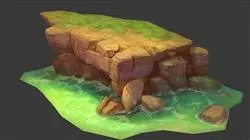University certificate
The world's largest faculty of video games”
Introduction to the Program
Lead your company to success by ensuring that your video games are published without errors thanks to this Postgraduate diploma”

When a video game is released without proper testing, negative events can befall the company: players spend money on an unfinished product, resulting in complaints that damage the company's reputation, which, in turn, causes that video game's sales and the company's future titles to decline.
As such, an inadequate or non-existent Testing phase can ultimately lead to the demise of the company. That is why it is so important, and why companies are giving more and more importance to the role of Testers. However, to perform this task, one must possess specific knowledge in the field, since not just anyone can occupy a position of such responsibility.
For that reason, this Postgraduate diploma in Video Game Testing is the answer for all those who endeavor to work in this industry as Testers in one of the big companies. The program offers students all the knowledge they require to carry out various types of tests and simulations in video games, so as to ensure that they are published without errors, thereby favoring their commercial success.
The knowledge you're looking for to become a great video game tester is right here"
This Postgraduate diploma in Video Game Testing contains the most complete and up-to-date program on the market. The most important features include:
- Practical cases presented by experts in video game Testing
- The graphic, schematic, and practical contents with which they are created, provide scientific and practical information on the disciplines that are essential for professional practice
- Practical exercises where the self-assessment process can be carried out to improve learning
- Its special emphasis on innovative methodologies
- Theoretical lessons, questions to the expert, debate forums on controversial topics, and individual reflection assignments
- Content that is accessible from any fixed or portable device with an Internet connection
You've always wanted to be the first to test new video games, and this course will help you get there"
The program’s teaching staff includes professionals from sector who contribute their work experience to this training program, as well as renowned specialists from leading societies and prestigious universities.
The multimedia content, developed with the latest educational technology, will provide the professional with situated and contextual learning, i.e., a simulated environment that will provide immersive specialization programmed to learn in real situations.
This program is designed around Problem-Based Learning, whereby the professional must try to solve the different professional practice situations that arise throughout the program. For this purpose, the student will be assisted by an innovative interactive video system created by renowned and experienced experts.
Companies are looking for testing specialists to make their video games successful"

You need specific knowledge to work as a Tester. This educational program teaches you everything about the profession"
Syllabus
To ensure students learn everything they need to become great testers, the Postgraduate diploma in Video Game Testing offers them the best content in this area, developing specific and extensive knowledge so they receive a comprehensive education. Students will learn everything about programming in real time, about the operation of consoles and devices, and about networks and multiplayer systems. With this syllabus, students will become great specialists in video game testing.

This is the best syllabus you will find to become a great video game tester”
Module 1. Real-Time Programming
1.1. Basic Concepts in Concurrent Programming
1.1.1. Fundamental Concepts
1.1.2. Concurrency
1.1.3. Benefits of Concurrency
1.1.4. Concurrency and Hardware
1.2. Basic Concurrency Support Structures in Java
1.2.1. Concurrency in Java
1.2.2. Creating Threads
1.2.3. Methods
1.2.4. Synchronization
1.3. Threads, Life Cycles, Priorities, Interruptions, Status and Executers
1.3.1. Threads
1.3.2. Life Cycle
1.3.3. Priorities
1.3.4. Interruptions
1.3.5. Status
1.3.6. Executers
1.4. Mutual Exclusion
1.4.1. What Is Mutual Exclusion?
1.4.2. Dekker’s Algorithm
1.4.3. Peterson’s Algorithm
1.4.4. Mutual Exclusion in Java
1.5. Status Dependency
1.5.1. Dependency Injections
1.5.2. Pattern Implementation in Java
1.5.3. Ways to Inject Dependencies
1.5.4. Example
1.6. Design Patterns
1.6.1. Introduction
1.6.2. Creation Patterns
1.6.3. Structure Patterns
1.6.4. Behavioral Patterns
1.7. Using Java Libraries
1.7.1. What Are Java Libraries?
1.7.2. Mockito-All, Mockito-Core
1.7.3. Guava
1.7.4. Commons-io
1.7.5. Commons-lang, Commons-lang3
1.8. Shader Programming
1.8.1. Pipeline 3D and Rasterized
1.8.2. Vertex Shading
1.8.3. Pixel Shading: Lighting I
1.8.4. Pixel Shading: Lighting II
1.8.5. Post-Effects
1.9. Real-Time Programming
1.9.1. Introduction
1.9.2. Processing Interruptions
1.9.3. Synchronization and Communication between Processes
1.9.4. Real-Time Planning Systems
1.10. Real-Time Planning
1.10.1. Concepts
1.10.2. Real-Time Systems Reference Model
1.10.3. Planning Policies
1.10.4. Cyclical Planners
1.10.5. Statistical Property Planners
1.10.6. Dynamic Property Planners
Module 2. Consoles and Devices for Videogames
2.1. History of Programming in Video Games
2.1.1. Atari (1977-1985)
2.1.2. Nintendo and Super Nintendo Entertainment Systems (NES and SNES) (1985-1995)
2.1.3. PlayStation/PlayStation 2 (1995-2005)
2.1.4. Xbox 360, PlayStation 3 and Nintendo Wii (2005-2013)
2.1.5. Xbox One, PlayStation 4 and Nintendo Wii U - Switch (2013-present)
2.1.6. The Future
2.2. History of Gameplay in Video Games
2.2.1. Introduction
2.2.2. The Social Context
2.2.3. Structural Diagram
2.2.4. Future
2.3. Adapting to Modern Times
2.3.1. Games Based on Movement
2.3.2. Virtual Reality
2.3.3. Augmented Reality
2.3.4. Mixed Reality
2.4. Unity: Scripting I and Examples
2.4.1. What Is a Script?
2.4.2. Our First Script
2.4.3. Adding a Script
2.4.4. Opening a Script
2.4.5. MonoBehavior
2.4.6. Debugging
2.5. Unity: Scripting II and Examples
2.5.1. Keyboard and Mouse Input
2.5.2. Raycast
2.5.3. Installation
2.5.4. Variables:
2.5.5. Public and Serialized Variables
2.6. Unity: Scripting III and Examples
2.6.1. Obtaining Components
2.6.2. Modifying Components
2.6.3. Testing
2.6.4. Multiple Objects
2.6.5. Colliders and Triggers
2.6.6. Quaternions
2.7. Peripherals
2.7.1. Evolution and Classification
2.7.2. Peripherals and Interfaces
2.7.3. Current Peripherals
2.7.4. Near Future
2.8. Video Games: Future Perspectives
2.8.1. Games Based in the Cloud
2.8.2. Absence of Controllers
2.8.3. Immersive Reality
2.8.4. Other Alternatives
2.9. Architecture
2.9.1. Special Needs in Video Games
2.9.2. Evolution of Architecture
2.9.3. Current Architecture
2.9.4. Differences Between Architecture
2.10. Development Kits and Their Evolution
2.10.1. Introduction
2.10.2. Third Generation of Development Kits
2.10.3. Fourth Generation of Development Kits
2.10.4. Fifth Generation of Development Kits
2.10.5. Sixth Generation of Development Kits
Module 3. Multiplayer Networks and Systems
3.1. History and Evolution of Multiplayer Video Games
3.1.1. The 1970s: First Multiplayer Games
3.1.2. The 90s: Duke Nukem, Doom and Quake
3.1.3. The Rise of Multiplayer Video Games
3.1.4. Local or Online Multiplayer
3.1.5. Party Games
3.2. Multiplayer Business Models
3.2.1. Origin and Function of Emerging Business Models
3.2.2. Online Sales Services
3.2.3. Free to Play
3.2.4. Microtransactions
3.2.5. Advertising
3.2.6. Monthly Payment Subscription
3.2.7. Pay to Play
3.2.8. Try Before You Buy
3.3. Local and Network Games
3.3.1. Local Games: Beginnings
3.3.2. Party Games: Nintendo and Family Union
3.3.3. Networks Games: Beginnings
3.3.4. Network Games Evolution
3.4. OSI Model: Layers I
3.4.1. OSI Model: Introduction
3.4.2. Physical Layer
3.4.3. Data Link Layer
3.4.4. Network Layer
3.5. OSI Model: Layers II
3.5.1. Transport Layer
3.5.2. Session Layer
3.5.3. Presentation Layer
3.5.4. Application Layer
3.6. Computer Networks on the Internet
3.6.1. What Are Computer Networks?
3.6.2. Software
3.6.3. Hardware
3.6.4. Servers
3.6.5. Network Storage
3.6.6. Network Protocols
3.7. Mobile and Wireless Networks
3.7.1. Mobile Networks
3.7.2. Wireless Networks
3.7.3. How Mobile Networks Work
3.7.4. Digital Technology
3.8. Security
3.8.1. Personal Security
3.8.2. Video Game Hacks and Cheats
3.8.3. Anti-Cheating Security
3.8.4. Anti-Cheating Security Systems Analysis
3.9. Multiplayer Systems: Servers
3.9.1. Server Hosting
3.9.2. Massively Multiplayer Online (MMO) Video Games
3.9.3. Dedicated Video Game Servers
3.9.4. Local Area Network (LAN) Parties
3.10. Multiplayer Video Game Design and Programming
3.10.1. Multiplayer Video Game Design Basics in Unreal
3.10.2. Multiplayer Video Game Design Basics in Unity
3.10.3. How to Make a Multiplayer Game Fun
3.10.4. Beyond the Controller: Multiplayer Controller Innovation

A unique, key and decisive training experience to boost your professional development”
Postgraduate Diploma in Video Game Testing
Software testing in video game development plays a fundamental role in the consolidation of a successful project; for this reason, entering this area is an excellent opportunity for all professionals to grow in the industry efficiently. The Postgraduate Diploma in Video Game Testing of TECH Global University consists of 450 instructive hours, during which students will have access to an innovative study plan, together with a document bank containing the most recent advances in the field. Our program will enable students to detect errors during the testing phase, learning about the different types of problems that may arise during the development phase. They will also understand how video games are designed and structured, knowing the key features of a real-time programming language.
Postgraduate Diploma in Video Game Testing 100% online
To understand the operation of testing it is necessary to know how the video game is structured, for this reason, in this postgraduate course of TECH we focus on developing a new theoretical background, which allows the professional to actively participate in the processes of error correction, providing an objective and critical view for the progress of the product. In addition, the function of the operating system of mobile devices and video game platforms will be understood. On the other hand, we will improve the students' communication skills, so that they can establish solid relationships in order to create a healthy work environment.







